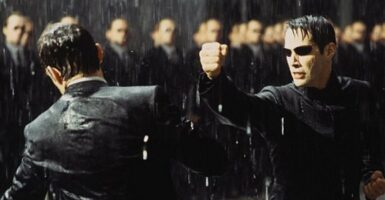Star Trek’s Worst Movie Redeems Beloved Character
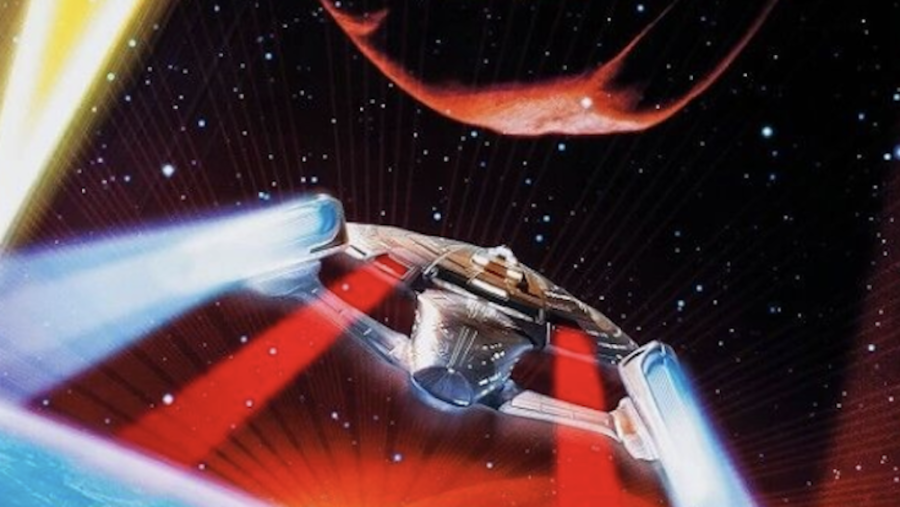
Most fans of the franchise find Star Trek: Insurrection to be a huge disappointment, which is understandable: following up the epic Borg battles of First Contact with a movie where Data asks Worf about his boobs is fairly insane.
However, we think fans need to give this third movie featuring The Next Generation crew more credit for a simple reason. In short, the movie redeems Captain Picard by showing his willingness to violate the Prime Directive and go against Starfleet’s orders so he can keep the Federation from forcibly displacing people.
Captain Picard’s Most Significant Moments
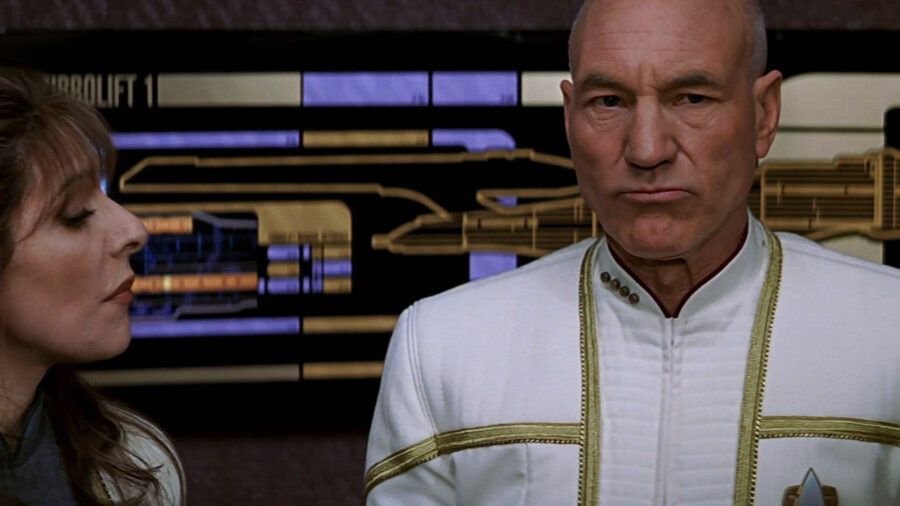
Unless you’ve watched all of Star Trek: The Next Generation, you might not realize why this Picard character change is so significant.
While his character has never been too precious about the Prime Directive (something we are reminded of in the excellent episode “The Drumhead”), he still had a tendency to follow Starfleet’s orders even if they were awful.
Picard Changes Course
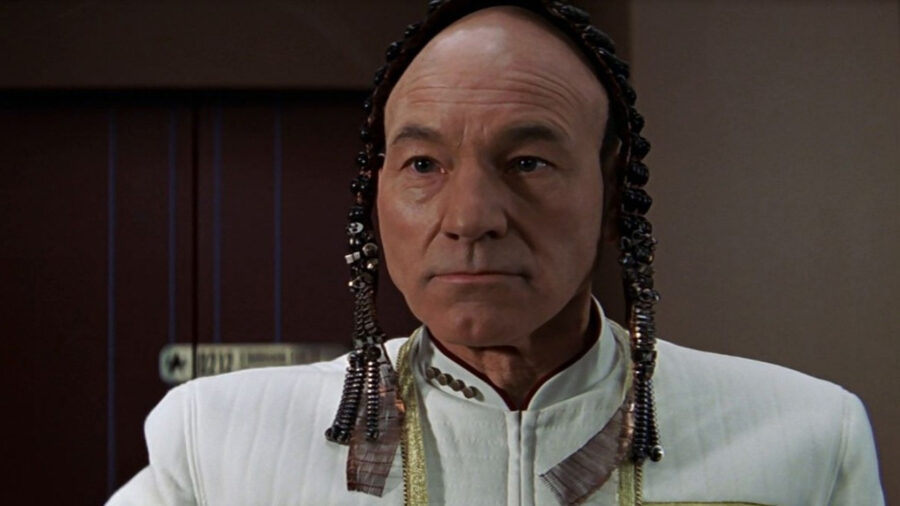
Perhaps the worst example of this occurred in the episode “Journey’s End,” where he is fully prepared to transport Native American colonists from their home and forcibly move them elsewhere in order to accommodate a recent treaty with the Cardassians.
It’s a truly ugly moment for Picard, and to make matters worse, audiences are forced to side with Wesley Crusher, seemingly the only Starfleet officer willing to stand up against this injustice. He goes so far as to resign from Starfleet altogether in protest.
Perhaps this had a bigger impact on Picard than anyone could have guessed because he ultimately followed in Wesley’s path during the events of Star Trek: Insurrection.
Star Trek: Insurrection Story
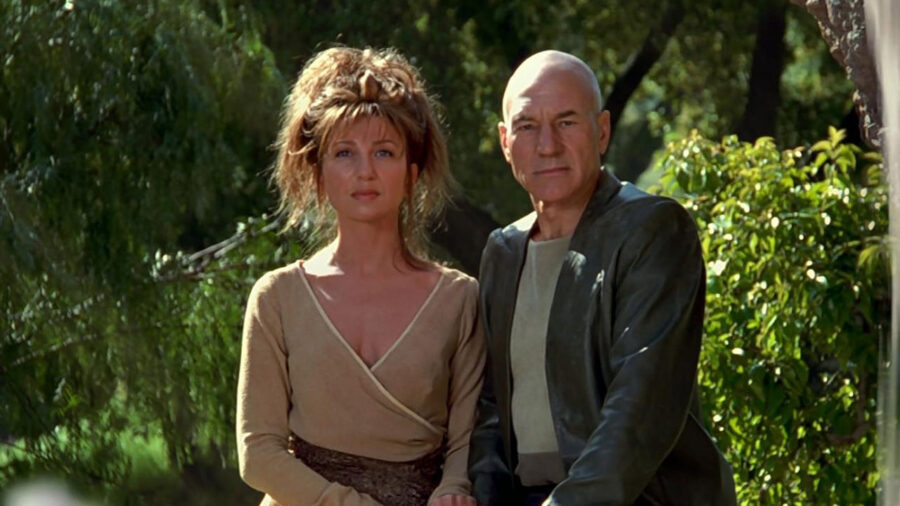
The plot of that movie revolves around the Ba’ku, a peaceful and (seemingly) primitive people whose planet’s rings emit “metaphysic particles” that functionally make its inhabitants immortal.
It makes the Enterprise crew feel younger almost immediately and even has healing properties that allow Geordi La Forge to see without his VISOR.
This helps explain the darkest plot element of Star Trek: Insurrection, as an evil admiral plans to covertly move the inhabitants to another planet in a cloaked holoship so that Starfleet (currently in the middle of the bloody Dominion War) can take advantage of the planet’s healing properties.
Helping The Ba’Ku
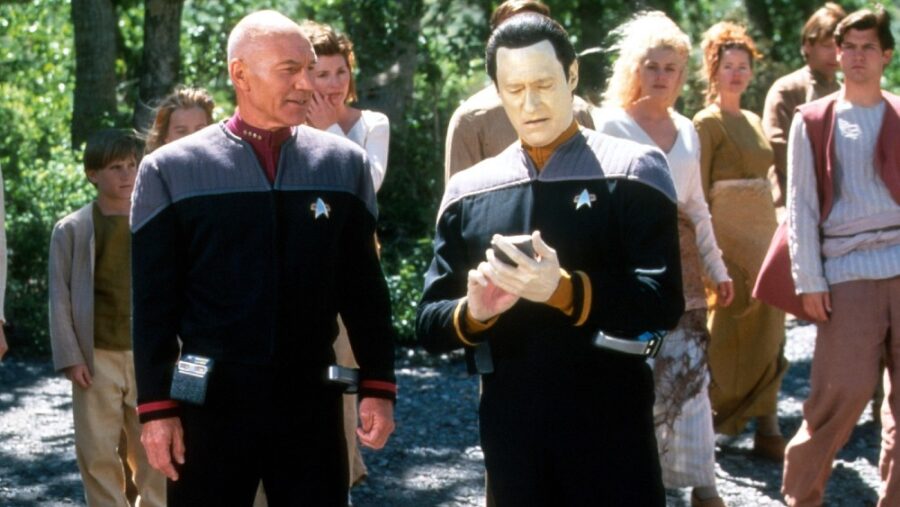
The admiral tries to play coy, but once Captain Picard learns about the situation, the older officer orders the Enterprise to leave the system and leave the Ba’ku (who we find out are technologically advanced but simply choose to live primitive lives) to their fate.
Picard, bristling at the admiral’s attempt to violate the Prime Directive and at his cruel manipulation of these people, chooses to resign from Starfleet and help the Ba’ku in their fight against both the evil admiral and the Son’a, his alien allies.
Getting More Complex
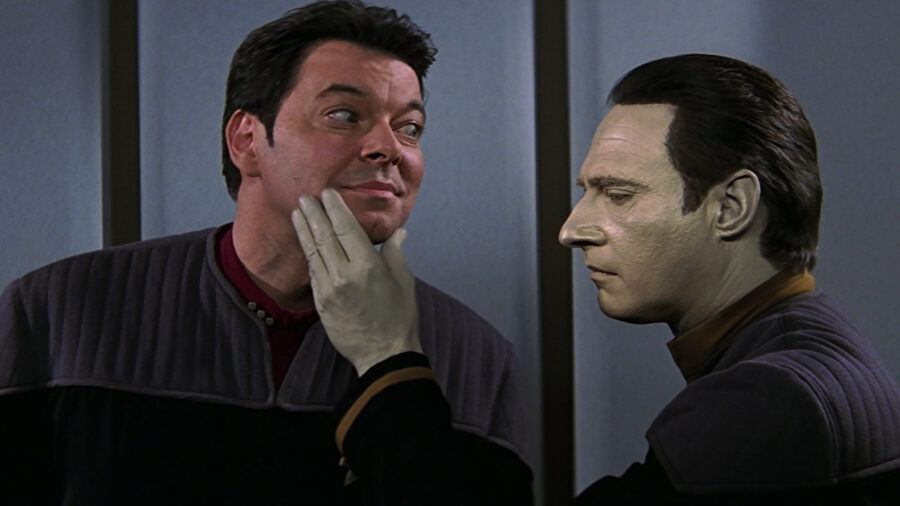
Obviously, the plot of Star Trek: Insurrection gets more complex…we find out the Son’a are actually Ba’ku who previously left the planet, for example.
But what we really love about this film is quite simple: it redeems Picard after his awful support of following orders and forcibly moving people in “Journey’s End.” That episode showed Wesley Crusher willing to resign from Starfleet and personally help the colonists, something that, years later, Picard is willing to do for the Ba’ku.
Standing Up Against Evil
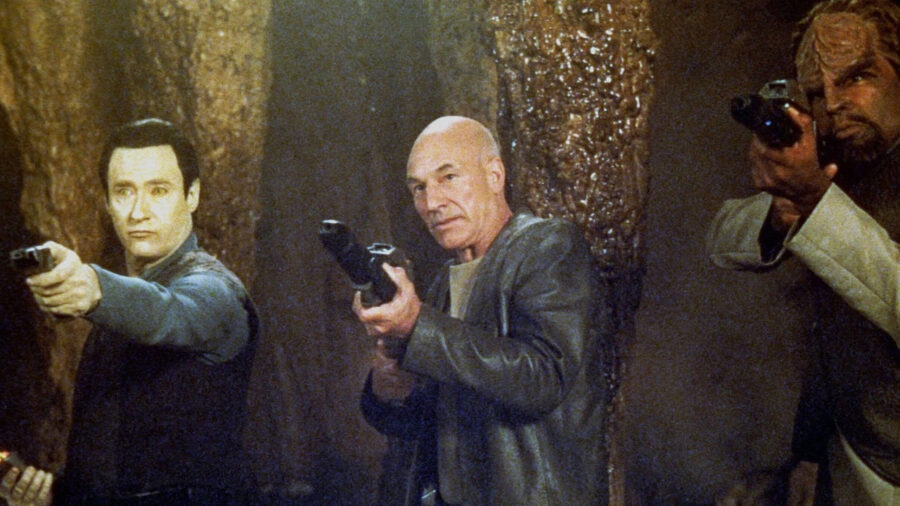
For longtime Star Trek fans, that adds some pleasantly crunchy complexity to both Picard as a character and his relationship with Wesley. For much of The Next Generation, Picard tries to teach Wesley how to be the perfect Starfleet officer.
But in Insurrection, we discover that Picard ended up learning something equally important from Wesley: if the first duty of a Starfleet officer really is to the truth, it’s important to stand up against hypocrisy, lies, and injustice, no matter what your official orders are.

